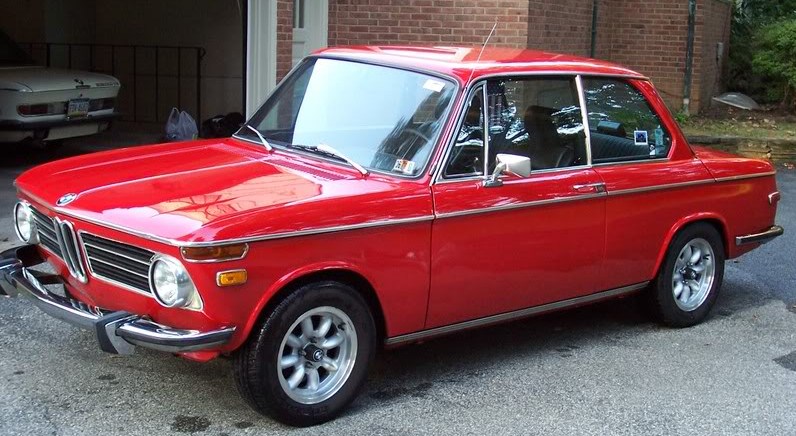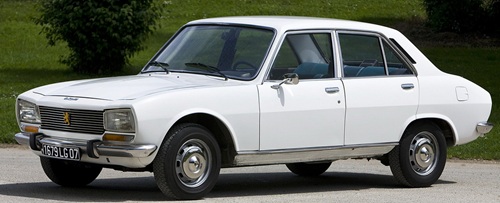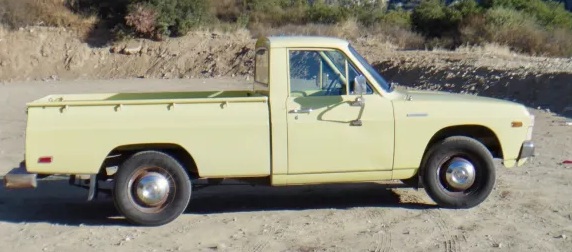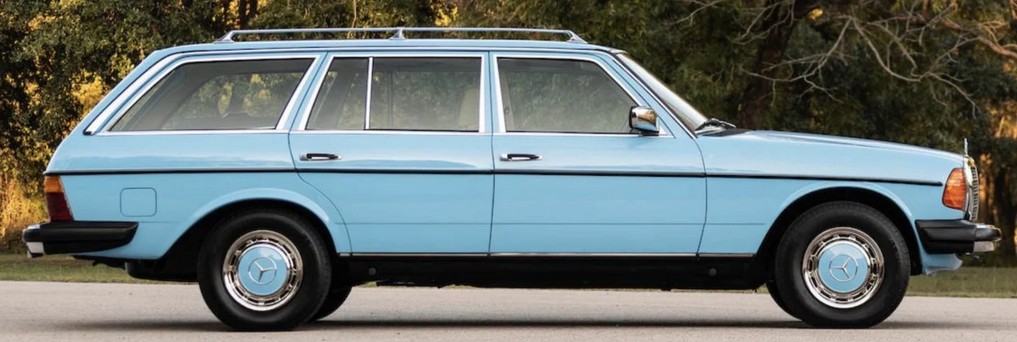This article got me thinking. A short excerpt:
When that computer-equipped vehicle begins to run badly or not run at all, a diagnostic check is in store, by plugging an electrical device into the receiver under the dash, and it produces a code. That code number correlates with a symptom, such as 02 bank sensor, or cam positioning sensor, or ignition module, or sometimes vague terms that confound the most experienced mechanics.
The fix begins by purchasing the parts and installing them to determine if that fixes the problem. If not, more guessing, parts, and labor, only to have that problem or another reappear again a few days or a week later. Dealerships run their mechanics out at about $200 per hour, and the independent mechanics are not far behind. The auto makers have figured out that if it is made complicated enough, and if expensive software and computers are necessary to diagnose the problems, the customer has to return to a “Factory Authorized Dealer” to correct the problem. Not to mention some specialized tools necessary to access the problem.
If the vehicle is over ten years old, chances are, it will not be repaired, and it goes to the scrap yard to be crushed, and the low-income people are faced with the dilemma of how to get to work and transport the family.
Why has this happened?
All of this electronic stuff in cars has been done in the name of global warming and saving the planet — while ignoring a large portion of the average and lower-income population. We are a sophisticated society here, but we must do better.
As with almost all legislation nowadays, laws have been proposed by, passed by, and supported by people and organizations who are basically inured to the consequences thereof.
There is of course a solution, and it’s one near and dear to my heart.
It may be time to allow the auto industry EPA laws to lie fallow for a year every five years* and produce vehicles that are as easy to repair as my 1956 Chevrolet, without the computers or electric windows or door locks. Let’s produce vehicles with a simple heater and an air-conditioner, with inexpensive freon and an AM/FM radio. Produce these vehicles with four- and six-cylinder engines without fuel injection. The vehicle should sell for less than $10,000 and should last twenty years if not more. Teach auto shop in the high schools, and the family can learn to fix their own cars with inexpensive parts.
*Not every five years; forever. And not just EPA laws and regs; the stupidly-excessive safety ones too.
Here’s what I want for myself. A 1.6-, 2- or 2.5-liter internal combustion engine producing about 100-125hp in a smallish, light-framed car. If I still had a family of kids, then a 3.0-liter engine producing about 175- to 200hp in a passenger car or smallish SUV. If I wanted a small truck for routine household jobs (carrying fertilizer, sod, boards or planks for example), then a 2.5-liter engine producing 150hp, and if I needed a larger truck for serious work, a 4- to 4.7-liter engine generating 300hp. (For the latter two groups, sufficient torque to tow a boat or small trailer.) If I wanted something sporty, then go back to the first two groups of vehicle above and boost the power in a smaller (e.g. two-seater) car.
Here’s the commonality between all these vehicles: no computer chips, no “engine management systems” or anything like that. Forget those crappy little touchscreens while we’re there. The electrical system needs to power the instruments, the lights, the windshield wipers… and that’s it. Forget fuel injection, remote starting, power windows, power truck latches or power anything that is not directly related to the car’s primary function. If you want to have GPS or any kind of emergency capability, use your damn smart phone. If you can’t live without all those electronic conveniences, then by all means buy a “modern” car, SUV or truck with all those geegaws — but be prepared to pay a super-premium price (which one could argue is already in place, when a new-model Ford Bronco [!!!!!] can cost over a hundred grand).
I know I’m going to face one of those reductio ad absurdam arguments: “You basically want us to all drive Trabants or Yugos!” which is arrant nonsense. Modern manufacturing techniques and metals have come a long way, and there’s no reason why “inexpensive” should mean “shoddy” anymore.
Here’s an interesting fact. Do you know which groups of cars are seeing the greatest price increases? Rebuilt and/or resto-modded cars from the 1960s and -70s that predate the electronic era. And I’m not just talking exotic sports cars, either. I recently saw for sale a restored 1965 Mercedes 230 SL (W113) for nearly two hundred thousand dollars, and it was gone within a week. But that’s a sports car. A 1964 Mercedes 220 SE is asking $68,000. (My Dad had one of these back then, and he sold it with over 150,000 miles on the clock — and the next owner added another 100,000 or so before selling it, still in perfect running condition.)
It’s a little more difficult with U.S.-made cars of that era, because most have been Dream Machined and muscle-carred into the stratosphere. Even a reconditioned-to-original-spec Chevy C20 or K5 model truck will run you about $90,000 (which is insane).
Look none of this is easy. Life nowadays seems to be horrifyingly complicated and over-technical (battery-operated electric toothbrushes? FFS), and I know that what I’m asking for is probably too much.
But I’m allowed to dream; and I dream of a simple mechanical vehicle that even I — the most un-mechanically-minded man in the Western world — could fix with a simple instruction manual. (And really, that manual does not have to warn me not to drink the battery water; I already know that.)
I once helped a buddy fix his Mini-Cooper’s suspension, with nothing more than a few basic tools and a good repair manual, I replaced my Fiat’s exhaust pipe all by myself — and I once worked with a couple of guys to replace a universal joint on an old Land Rover, with no repair manual — so I’m not completely helpless. Would I want to do the repairs on one of my dream cars? Hell, no. But if push came to shove, I’d like to know that I could.
And of the car cost less than $10,000 as mentioned in the article above, that would leave a lot of money to pay repair bills, you betcha.
Here are a few examples of what I’m talking about; just picture them with more modern shells, better electrical systems (e.g. no Lucas) and modern rustproofing, and you’ll get the idea.
1967 BMW 1600

1974 Datsun 620 pickup

Peugeot 504 Ti

1975 Mazda B1600 pickup

And one more:
1976 Mercedes 300 D wagon

…and even that’s starting to get too complex — but it would last forever, as many did.
Feel free to suggest alternatives, or argue with my basic thesis, of course.

The 504 Ti was fuel injected though. I owned a early 70’s model and wouldn’t want having to mess with the Kugelfischer system.
I want a 1952 Chevy 5 window stepside truck with an early 70’s V8 drivetrain, 4wd, with AC and that’s it. Nothing fancy and fenders thick enough you can drill and tap em, as Remus used to say. And I don’t want any monthly payments. I’ll do ALL the maintenance myself, because I lived back then and know how to do it. Yes, I can pull that 350 4 bolt and replace the mains if needed.
As someone who’s had to rebuild just a few too many carburetors, I’d be willing to allow some easy to maintain fuel injection system. Say the mid-80’s throttle body unit on a Chevy 350 V8. It really makes a difference on cold start operation. In fact, basically just resurrect a 1989 Chevy half-ton extended cab pickup and offer it in a stripped down configuration with all the emission controls removed. That could easily be my forever truck right there.
And FYI – you’ll need to increase engine size to at least 5.0 or larger to get that 300 hp for a work truck if you’re wanting to be true old tech. I’d vote for a 350 as the baseline by which all others would be judged. Another good option would be that 300 straight six that Ford put in their trucks around that same time period.
Rebuilt trucks from the 80’s in mint condition are going for $40 to $60k right now according to several sites I check. So obviously I’m not the only one thinking that way.
I didn’t gain any experience in mechanicing as a teen but as a young broke married airman, I had to learn. I spent the late 60’s and 70’s with too much time working on my cars. Things didnt last as long. Exhaust systems seemed to rust out every 10k, tires and brakes, plugs and points, fuel pumps, water pumps, starter motors and solenoids, buy a kit and rebuild your carb. The stuff these days is more durable but a lot less accessible, even if I wasnt a partially disabled 76 yr old.
Sign me up
I’ll have my 02 Tacoma with the 4WD manual transmission back please
I’ll take the MB wagon, please. Those things had wonderfully comfortable seats.
Don’t shoot me, I’m simply the bearer of bad news:
The digital electronic control paradigm has proven to be cheap, reliable and effective and has entirely displaced the sort of analog systems that were once the only way to do the jobs. As a consequence, the design and engineering disciplines, skills, toolings and methodologies no longer exist at levels necessary to support industrial endeavor.
This is why even toasters have microcontrollers.
The call for simplification may be heeded, but the result will be some sort of digital hybrid.
And now for the dark portent:
These cars operate by digital message bus. For simplified example, the gas pedal sends a report indicating that it is at 5 degrees of rotation. The message is picked up by the fuel injector and the engine timing controler, who each do the necessary, most likely syncing with each other through other messages. This, incidentally, is how cars are hacked and taken over by bad actors. Competent data security calls for cryptographically authenticating the messages, so that fake throttle messages injected by a hacker are ignored. This is all well and good until the sole source of authentication keys are held by the manufacturer, and they decide not to share. Thus, you could have in your hand a perfect in every way replica of a replacement gas pedal assembly that lacks only official factory keysets, thus rendering it useless. To be certain the issue of “factory authorized parts” with respect to invalidating warranties was handled by the Magnusen-Moss act in 1975, but that legislation never anticipated our current situation. “Right to repair” is still a fresh wound in the legal landscape.
That same problem is only an illustration of the general case, which is a massive issue across the board. It’s not just your “Internet of things” device. It’s EVERYTHING. Your phone, your laptop, your data, your TV, your DVD player, your pacemaker, your iBrainImplant, whatever. YOU, as the owner of the device are NOT the ACTUAL AUTHORITY TO OPERATE. The actual authority to operate is whoever owns the keys to the system that certifies and authorizes authentication keys. And that is not you.
Darkly, the precedent that you may own the hardware, but are only licensing the software, and that licensing can legally come with arbitrary conditions of use is long established. And that, btw, is sufficient reason never to accept ANY sort of “smart” gun.
I agree. The drag racing aftermarket and others get around this issue but replacing the engine management computer with their own set of keys and a more open interface allowing users to do their own fuel mapping and ignition timing. However, it also means wholesale replacement of OEM Fuel and ignition systems a fairly extensive undertaking.
As for the old analog systems in the 70’s vehicles, people tend to remember only the good parts. They forget about Vapor lock problems – Hard starting in cold or rainy weather – Inadiquate heating and cooling issues — Tin worms ( rust everywhere ) Skinny tires with poor grip — Marginal brakes — no ABS – Poor cornering performance — severely diminished performance at anything above 3,000 ft of elevation.
I’ll stick with the convenance and features of todays cars that will cruise all day at the 80 + that seems to be the norm on interstates now. My Daily driver Lexus is closing in on 150,000 trouble free miles with just regular maitenance and DIY jobs like new Pads and Rotors at 120,000 ( a 2hour job ) with after market Better parts )
I also agree with your assessment. Today’s cars are simply better at being cars. I have direct experience, having owned both a 1968 Mustang convertible, and its 1996 descendant. The ’68 had a baby v8, which was nothing but engine and pure electromechanical control. The ’96 had a midrange V6. The 6 pulled way more horses, and was a superior car in every dimension, including reliability and maintainability.
Similarly, I have a hobby of restoring and playing pinball machines. (iirc) 1978 was the year they switched from pure electro-mech to transitors and microswitches, which had such a massive impact on reliability that most places sell pre-78 machines for scrap. I’ve rehabbed a few of those, and they can’t go 6 months without needing a tuneup.
Have you seen those new Toyota trucks that are verboten I the US? They look sturdy and simple.
Toyota Hilux…can’t buy them here for some whacked reasoning only Gov’t could conjure up….Top Gear BBC boys tried to destroy theirs but couldn’t. The Tacoma is supposed to be the equal but I’d rather have a Hilux.
That BMW 1600 was my first car at 16 – mine was white and had 100K miles on it. Loved that car – the engine was perfect (rebuilt it and the bearings were unscratched). The electrical system, water pump, CV joints, and rear differential were a different story. But it was a total gas to drive.
Or make the early 2003. 7.3 L Power Stroke Diesel in base configuration with the 5 speed manual transmission. I have a neighbor that bought a used 03 F-250 that had 98k on it and he puts another 20k on it every year since 2009. Outside of routine maintenance the biggest problem was a power steering pump that went out.
My suggestions: A Jeep TJ with a simple engine like you suggest, rugged, reliable and 4 x 4 drive that’s for the sportsman/hunter in me. For around town, I don’t think you can go much better than a ’57 Chevy with a small block engine. I tooled around town in a ’49 Plymouth with 3 on the column all through high school, I could make that work now as well….. we had a /58 Chevy we drove all over the U.S…. but I still like the 57’s better.
Kim, I am sure you realize that this line of thinking has been in the mind of a few million of us that were born in the 1950’s (maybe through mid 1960’s) and it is high time to put America back on the proper track for We The People over all the unicorn fart sniffing green gauze minded elites.
If Elon Musk happens to peruse his fellow countryman’s blog (that be you), I hereby propose the following course of action.
1) Terminate the EPA in its entirety, along with OSHA and any number of regulatory bodies.
2) Manufacturers can build whatever vehicle the market demands, including a bog standard 1965 version of (just spitballing here, you all may have other suggestions) :
Base 2 door and for utility sake, 4 door farm trucks, V8 small block and 2 barrel/4 barrel carb, body on frame as God ordered. No electronics at all (other than AM/FM radio single DIN) – hand crank windows, standard Kettering ignition and normal hydraulics.Key controlled central locking (they are just solenoids and switches). Steel bumpers and standard 7″ headlights or rectangle type. Disk brakes all round. No LED, just plain incandescent everywhere. Why no LED? Because we don’t make them here and likely we would have to bring back glass bulb production as well. Bring back LED to US production and I might relent (nah, go old school, it keeps lenses from ice accumulation in most of the nation as a benefit).
Same structure as above for a 4 door family mover station wagon, I would kill to have my 65 Impala wagon back only with a 4 speed manual or 3 speed automatic that is vacuum operated.
Same structure as above for a 2 and 4 door version of any of your favorite American sedans.
Same for a 2 door and 4 door sporty coupe in the BMW 2002 image or equivalent of your Italian, Brit, Japanese or Swedish choice.
By cutting out ALL the modern crap, the price per unit should drop by about 50% compared to what they now cost. As to ABS, nope – learn to drive for conditions, as we all used to do.
BTW, my 65 impala with the 2 barrel and a 327 small block was getting 17 MPG highway back in the day. I can live with that and considering modern steel formulations, vehicles will likely get far better than in past simply due to being 20% lighter,
Oh, get rid of ethanol gas completely, back to good ol leaded regular and high test. Before anyone squeals, we went a century with leaded gas with a growing, smarter and much healthier population than we now have. Tell me why to worry about tetraethyl lead in minute amounts? If someone has a better valve lubricant that is “less toxic”, have at it so long as the cost is the same or less.
I would buy one of these in a heartbeat, as would millions of Americans. Just imagine the aftermarket options that could he offered, you want ABS – DIY but don’t complain when shit breaks.
Let’s go Elon! You need to find a use for your Tesla factories as the demand for Duracell cars and trucks is extremely limited. Re-structure and start building what we really need/want/can afford after ditching 90% of all regulations and agencies.
Don’t throw out fuel injection just because it sounds complicated. I had a 79 Volkswagon Dasher with fuel injection. Yes K jetronic fuel injection. The system was simpler than a holley carb, and very easy to fix. I ended up selling it after I graduated college with 300,000 miles, and the guy I sold it to put on another 100,000 before he totaled it.
Mechanical fuel injection for diesel is OK. Have owned and maintained several diesels. Modern electronic injection with 15 or more sensors and multiple computers to make it all work, nothing but headaches and elevated cost of repair.
Bosch K Jetronic, maybe but as an elective option, not standard.
The whole exercise is to get back to KISS manufacturing of high cost devices in order to lower the selling price point while keeping them functional.
The part that you miss is the car companies absolutely do not car about the people who work on their own cars, nor should they. This people are not their customers with almost no exceptions.
First off, auto manufacturers do not sell to people – they sell to dealers. Those are who they have to keep happy.
Secondly, the people buying new cars almost never work on them themselves, and precious few of those who buy used. So there is zero economic incentive for car companies to care.
So while I get your complaint (it mirrors my complaint about the lack of manual transmission options) the reality is what it is.
I’ve wrenched on all kinds of cars from those made every decade back over the last 6. None of them are easy to work on. But the new stuff seems to run the longest without any hiccups. Things built in the 50s rarely made it past 100k miles. 60’s was a bit better but reliability really hit its stride from the mid 80s on to today. Mid 90s I heard of some park avenues, Buicks, going 400k. Without anything major breaking. It is easy to say things were built better back when, but I would have to say newer is better. Maybe not as pretty, but that is what women are for.